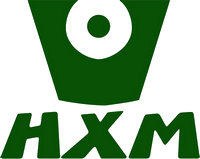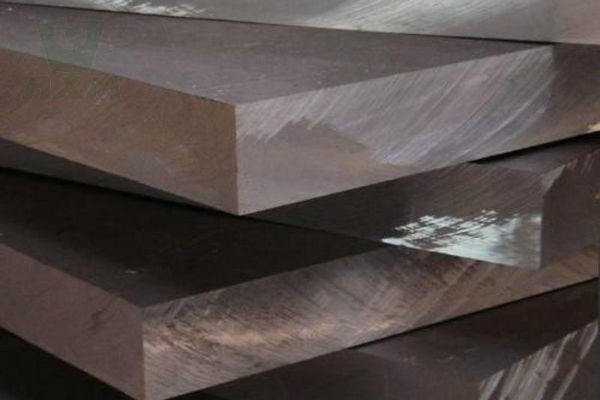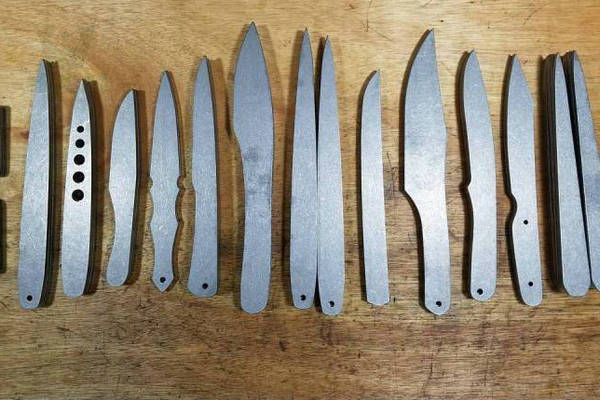Classification of Pipes
1. Classification by Production Method
(1) Seamless pipes – hot-rolled pipes, cold-rolled pipes, cold-drawn pipes, extruded pipes, jacking pipes
(2) Welded pipes
(a) By process – arc welded pipes, resistance welded pipes (high frequency, low frequency), gas welded pipes, furnace welded pipes
(b) By weld seams – straight seam welded pipes, spiral welded pipes
2. Classification by Cross-Sectional Shape
(1) Simple cross-sectional steel pipes – round steel pipes, square steel pipes, oval steel pipes, triangular steel pipes, hexagonal steel pipes, diamond steel pipes, octagonal steel pipes, semicircular steel pipes, others
(2) Complex cross-section steel pipes – unequal hexagonal steel pipes, five-petal plum blossom steel pipes, double convex steel pipes, double concave steel pipes, melon seed-shaped steel pipes, conical steel pipes, corrugated steel pipes, watch case steel pipes, others
3. Classification by Wall Thickness
Thin-walled steel pipes, thick-walled steel pipes
4. Classification by use
Steel pipes for pipelines, steel pipes for thermal equipment, steel pipes for mechanical industry, steel pipes for petroleum and geological drilling, steel pipes for containers, steel pipes for chemical industry, special purpose steel pipes, others
Seamless Steel Pipes
It is a long steel strip with a hollow cross-section and no seams around it. Steel pipes have a hollow cross-section and are widely used as pipelines for conveying fluids, such as pipelines for conveying oil, natural gas, coal gas, water, and certain solid materials. Compared with solid steel such as round steel, steel pipe is lighter in weight when the bending and torsional strength are the same. It is an economical cross-section steel and is widely used in the manufacture of structural parts and mechanical parts, such as oil drill pipes, automobile transmission shafts, bicycle frames, and steel scaffolding used in construction. Using steel pipes to manufacture annular parts can improve material utilization, simplify manufacturing processes, and save materials and processing time, such as rolling bearing rings and jack sleeves, which are currently widely made of steel pipes. Steel pipes are also indispensable materials for various conventional weapons.
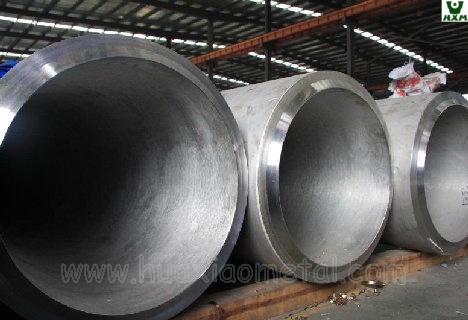
Gun barrels and cannon barrels are made of steel pipes. Steel pipes can be divided into round pipes and special-shaped pipes according to the different cross-sectional shapes. Since the circular area is the largest under the condition of equal circumference, more fluid can be transported using a round pipe. In addition, the circular cross-section is subjected to more uniform force when subjected to internal or external radial pressure. Therefore, most steel pipes are round pipes. (021-57590228 )
However, round tubes also have certain limitations. For example, under the condition of plane bending, round tubes are not as strong as square and rectangular tubes in bending resistance. Square and rectangular tubes are often used in some agricultural machinery frames, steel and wood furniture, etc. According to different uses, special-shaped steel tubes with other cross-sectional shapes are also required.
1. Seamless steel pipes for structures (GB/T8162-1999) are seamless steel pipes used for general structures and mechanical structures.
2. Seamless steel pipes for fluid transportation (GB/T8163-1999) are general seamless steel pipes used for conveying fluids such as water, oil, and gas.
3. Seamless steel pipes for low and medium-pressure boilers (GB3087-1999) are high-quality carbon structural steel hot-rolled and cold-drawn (rolled) seamless steel pipes used to manufacture various structures of low and medium-pressure boiler superheated steam pipes, boiling water pipes and locomotive boiler superheated steam pipes, large smoke pipes, small smoke pipes, and arch brick pipes.
4. Seamless steel pipe for high-pressure boiler (GB5310-1995) is a high-quality carbon steel, alloy steel, and stainless heat-resistant steel seamless steel pipe used to manufacture the heating surface of water tube boilers with high pressure and above.
5. High-pressure seamless steel pipe for fertilizer equipment (GB6479-2000) is a high-quality carbon structural steel and alloy steel seamless steel pipe suitable for chemical equipment and pipelines witha working temperature of -40~400℃ and a working pressure of 10~30Ma.
6. Seamless steel pipe for petroleum cracking (GB9948-88) is a seamless steel pipe suitable for furnace tubes, heat exchangers, and pipelines in petroleum refineries.
7. A steel pipe for geological drilling (YB235-70) is a steel pipe used by geological departments for core drilling. According to the purpose, it can be divided into drill pipes, drill collars, core tubes, casings and sedimentation tubes.
8. Diamond core drilling seamless steel pipe (GB3423-82) is a seamless steel pipe for drill rods, core rods, and casings used for diamond core drilling.
9. Petroleum drilling pipe (YB528-65) is a seamless steel pipe with internal or external thickening at both ends used for petroleum drilling. Steel pipes are divided into threaded and non-threaded types. Threaded pipes are connected with joints, and non-threaded pipes are connected with tool joints by butt welding. (021-57590365)
10. Carbon steel seamless steel pipe for ships (GB5213-85) is a carbon steel seamless steel pipe for manufacturing ship Class I pressure-resistant pipe systems, Class II pressure-resistant pipe systems, boilers, and superheaters. The working temperature of the carbon steel seamless steel pipe wall does not exceed 450℃, and the working temperature of the alloy steel seamless steel pipe wall exceeds 450℃.
11. Seamless steel pipe for automobile half-axle sleeve (GB3088-82) is a high-quality carbon structural steel and alloy structural steel hot-rolled seamless steel pipe for manufacturing automobile half-axle sleeve and drive axle housing shaft tubes.
12. High-pressure oil pipe for diesel engine (GB3093-2002) is a cold-drawn seamless steel pipe for manufacturing high-pressure pipe of diesel engine injection system.
13. Precision inner diameter seamless steel pipe for hydraulic and pneumatic cylinders (GB8713-88) is a cold-drawn or cold-rolled precision seamless steel pipe with precise inner diameter size for manufacturing hydraulic and pneumatic cylinders.
14. Cold-drawn or cold-rolled precision seamless steel pipe (GB3639-2000) is a cold-drawn or cold-rolled precision seamless steel pipe with high dimensional accuracy and good surface finish for mechanical structures and hydraulic equipment.
The use of precision seamless steel pipes to manufacture mechanical structures or hydraulic equipment can greatly save machining time, improve material utilization, and help improve product quality.
15. Seamless stainless steel pipe for structure (GB/T14975-2002) is a hot-rolled (extruded, expanded) and cold-drawn (rolled) seamless steel pipe made of stainless steel, which is widely used in corrosion-resistant pipes and structural parts and components in chemical, petroleum, textile, medical, food, machinery and other industries.
16. Seamless stainless steel pipe for fluid transportation (GB/T14976-2002) is a hot-rolled (extruded, expanded) and cold-drawn (rolled) seamless steel pipe made of stainless steel for conveying fluid.
17. Special-shaped seamless steel pipe is a general term for seamless steel pipes with other cross-sectional shapes except round pipes. According to the different cross-sectional shapes and sizes of steel pipes, they can be divided into equal wall thickness special-shaped seamless steel pipes (code D), unequal wall thickness special-shaped seamless steel pipes (code BD), and variable diameter special-shaped seamless steel pipes (code BJ).
Special-shaped seamless steel pipes are widely used in various structural parts, tools, and mechanical parts. Compared with round tubes, special-shaped tubes generally have larger moments of inertia and section modulus, and have greater bending and torsion resistance, which can greatly reduce the weight of the structure and save steel.
Welded Steel Pipes
Welded steel pipes, also known as welded pipes, are steel pipes made by welding steel plates or steel strips after curling and forming. Welded steel pipes have simple production processes, high production efficiency, many varieties and specifications, and low equipment investment, but their general strength is lower than that of seamless steel pipes. Since the 1930s, with the rapid development of high-quality strip steel continuous rolling production and the advancement of welding and inspection technology, the quality of welds has been continuously improved, the varieties and specifications of welded steel pipes have increased, and they have replaced seamless steel pipes in more and more fields. Welded steel pipes are divided into straight-seam welded pipes and spiral welded pipes according to the form of welds.
Straight seam welded pipes have simple production processes, high production efficiency, low cost, and rapid development. The strength of spiral welded pipes is generally higher than that of straight seam welded pipes. They can produce welded pipes with larger diameters with narrower billets, and can also produce welded pipes with different diameters with billets of the same width. However, compared with the straight seam pipe of the same length, the weld length increases by 30~100%, and the production speed is lower.
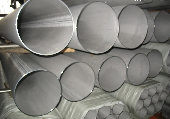
Therefore, most smaller-diameter welded pipes use straight seam welding, while large-diameter welded pipes mostly use spiral welding.
1. Welded steel pipe for low-pressure fluid transportation (GB/T3092-1993) is also called general welded pipe, commonly known as black pipe. It is a welded steel pipe used for conveying generally low-pressure fluids such as water, gas, air, oil heating steam, and other purposes. The wall thickness of the steel pipe joint is divided into ordinary steel pipe and thickened steel pipe; the pipe end form is divided into non-threaded steel pipe (bright pipe) and threaded steel pipe. The specifications of the steel pipe are expressed in nominal diameter (mm), which is an approximate value of the inner diameter. It is usually expressed in inches, such as 11/2. In addition to being used directly for conveying fluids, welded steel pipes for low-pressure fluid transportation are also widely used as the original pipe of galvanized welded steel pipes for low-pressure fluid transportation.
2. A galvanized welded steel pipe for low-pressure fluid transportation (GB/T3091-1993) is also called a galvanized electric welded steel pipe, commonly known as a white pipe. It is a hot-dip galvanized welded (furnace welded or electrically welded) steel pipe used for conveying water, gas, air oil, heating steam, warm water, and other generally low-pressure fluids or other purposes. The wall thickness of the steel pipe joint is divided into ordinary galvanized steel pipe and thickened galvanized steel pipe; the pipe end form is divided into non-threaded galvanized steel pipe and threaded galvanized steel pipe. The specifications of the steel pipe are expressed in nominal diameter (mm), which is an approximate value of the inner diameter. It is usually expressed in inches, such as 11/2, etc. (Tianyang Steel Pipe)
3. Ordinary carbon steel wire casing (GB3640-88) is a steel pipe used to protect wires in electrical installation projects such as industrial and civil buildings, and installation of machinery and equipment.
4. Straight seam electric welded steel pipe (YB242-63) is a steel pipe with the weld parallel to the longitudinal direction of the steel pipe. Usually divided into metric electric welded steel pipes, electric welded thin-walled pipes, transformer cooling oil pipes, etc.
5. Spiral seam submerged arc welded steel pipes for pressure fluid transportation (SY5036-83) are made of hot-rolled steel strip coils as pipe blanks, spirally formed at room temperature, welded by double-sided submerged arc welding, and used for pressure fluid transportation. The steel pipe has strong pressure-bearing capacity and good welding performance. It has undergone various rigorous scientific inspections and tests and is safe and reliable to use. The steel pipe has a large diameter, high transportation efficiency, and can save investment in laying pipelines. It is mainly used for pipelines for transporting oil and natural gas.
6. Spiral seam high-frequency welded steel pipes for pressure fluid transportation (SY5038-83) are made of hot-rolled steel strip coils as pipe blanks, spirally formed at room temperature, and welded by high-frequency lap welding. It is a spiral seam high-frequency welded steel pipe for pressure fluid transportation. The steel pipe has strong pressure bearing capacity, good plasticity, and is easy to weld and process. After various strict and scientific inspections and tests, it is safe and reliable to use. The steel pipe has a large diameter, high transportation efficiency, and can save investment in laying pipelines. It is mainly used for laying pipelines for transporting oil, natural gas, etc.
7. Spiral seam submerged arc welded steel pipe for general low-pressure fluid transportation (SY5037-83) is made of hot-rolled steel strip coils as pipe blanks, spirally formed at room temperature, and made of double-sided automatic submerged arc welding or single-sided welding. It is used for water, gas, air steam, and other general low-pressure fluid transportation. Submerged arc welded steel pipe.
8. Spiral seam high-frequency welded steel pipe for general low-pressure fluid transportation (SY5039-83) is made of hot-rolled steel strip coils as pipe blanks, spirally formed at room temperature, and welded by high-frequency lap welding. It is used for spiral seam high-frequency welded steel pipe for general low-pressure fluid transportation. (www.steeltube-cn.com)
9. Spiral welded steel pipe for piles (SY5040-83) is made of hot-rolled steel strip coils as pipe blanks, spirally formed at room temperature, and made by double-sided submerged arc welding or high-frequency welding. It is used for foundation piles of civil construction structures, docks, bridges, etc.
Steel-Plastic Composite Pipes, Large-Diameter Coated Steel Pipes
Steel-plastic composite pipes are made of hot-dip galvanized steel pipes as the base, and plastic is coated on the inner wall (or the outer wall when necessary) by powder melt spraying technology, with excellent performance. Compared with galvanized pipes, it has the advantages of corrosion resistance, no rust, no fouling, smooth and smooth, clean and non-toxic, and long service life. According to tests, the service life of steel-plastic composite pipes is more than three times that of galvanized pipes. Compared with plastic pipes, it has the advantages of high mechanical strength, good pressure resistance, and heat resistance. Since the base is a steel pipe, there is no embrittlement or aging problem. It can be widely used in fluid transportation and heating projects such as tap water, gas, and chemical products, and is an upgraded product of galvanized pipes. Since its installation and use methods are the same as those of traditional galvanized pipes, the pipe fittings are also the same, and it can replace aluminum-plastic composite pipes in large-diameter tap water transportation, it is very popular among users and has become one of the most competitive new products in the pipeline market.
Coated steel pipes are made by coating plastic on large-diameter spiral welded pipes and high-frequency welded pipes. The maximum pipe diameter is 1200mm. It can be coated with various plastic coatings with different properties such as polyvinyl chloride (PVC), polyethylene (PE), and epoxy resin (EPOZY) according to different needs. It has good adhesion and strong corrosion resistance. It can resist strong acids, strong alkalis, and other chemical corrosion. It is non-toxic, rust-proof, wear-resistant, impact-resistant, and permeable. The pipe surface is smooth and does not adhere to any substance. It can reduce the resistance during transportation, improve the flow and transportation efficiency, and reduce the transportation pressure loss.
The coating contains no solvents or exudate substances, so it will not pollute the medium being transported, thus ensuring the purity and hygiene of the fluid. It can be used alternately in hot and cold cycles within the range of -40°C to +80°C, without aging or cracking, so it can be used in harsh environments such as cold regions.
Large-diameter coated steel pipes are widely used in engineering fields such as tap water, natural gas, petroleum, chemical industry, medicine, communications, electricity, and ocean.
